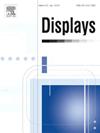Opto-mechanical design of Fourier transform spectral polarization imaging system based on dual Wollaston prisms
IF 3.7
2区 工程技术
Q1 COMPUTER SCIENCE, HARDWARE & ARCHITECTURE
引用次数: 0
Abstract
The integration of polarization and spectral imaging, which exploits the principle of spectral interference, has long been a subject of extensive research. However, existing literature lacks comprehensive discussions on the opto-mechanical design of Fourier transform spectral polarization imaging systems (FTSPIS) employing dual Wollaston prisms (DWP). We proposing a novel opto-mechanical design strategy for FTSPIS based on DWP. Specifically, the FTSPIS system is divided into three independent modules: telescopic objective lens with phase modulation module (PMM), eyepiece and splitting system with DWP, and secondary imaging system. For each module, a detailed optimization design process is presented, with special emphasis on the optical effects produced by each module and their compatibility with one another. A practical design instance is provided to illustrate the feasibility of constructing a visible-spectrum FTSPIS that can achieve a full field of view (FOV) of ± 5°. The effectiveness of the proposed design is verified through simulation analysis of interference patterns and demodulation. An elaboration on the mechanical structures for each module is also provided. These multi-degree-of-freedom adjustment capabilities enable precise control of the system’s performance, thus ensuring that the desired optical results can be achieved.
求助全文
约1分钟内获得全文
求助全文
来源期刊

Displays
工程技术-工程:电子与电气
CiteScore
4.60
自引率
25.60%
发文量
138
审稿时长
92 days
期刊介绍:
Displays is the international journal covering the research and development of display technology, its effective presentation and perception of information, and applications and systems including display-human interface.
Technical papers on practical developments in Displays technology provide an effective channel to promote greater understanding and cross-fertilization across the diverse disciplines of the Displays community. Original research papers solving ergonomics issues at the display-human interface advance effective presentation of information. Tutorial papers covering fundamentals intended for display technologies and human factor engineers new to the field will also occasionally featured.
 求助内容:
求助内容: 应助结果提醒方式:
应助结果提醒方式:


